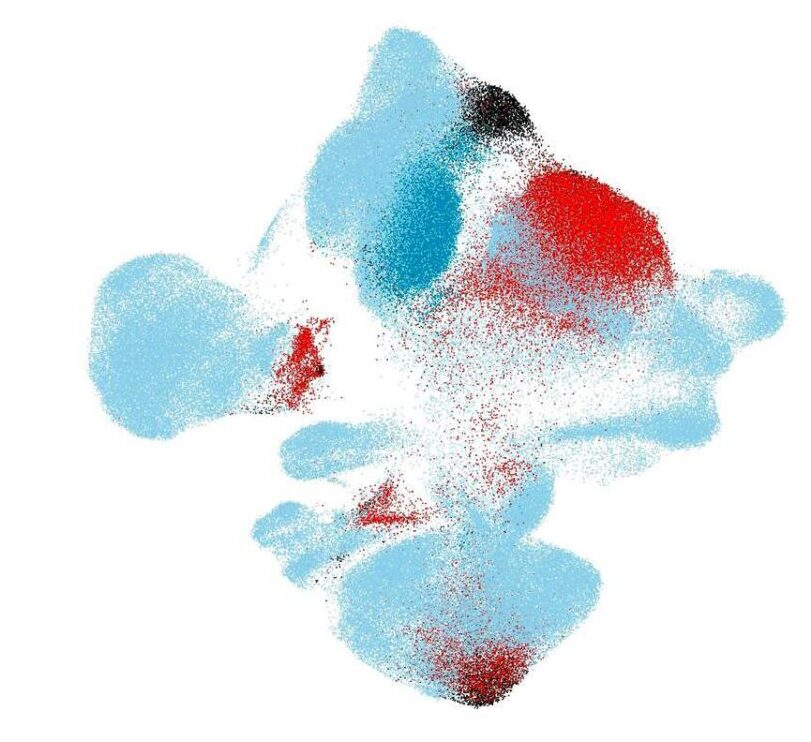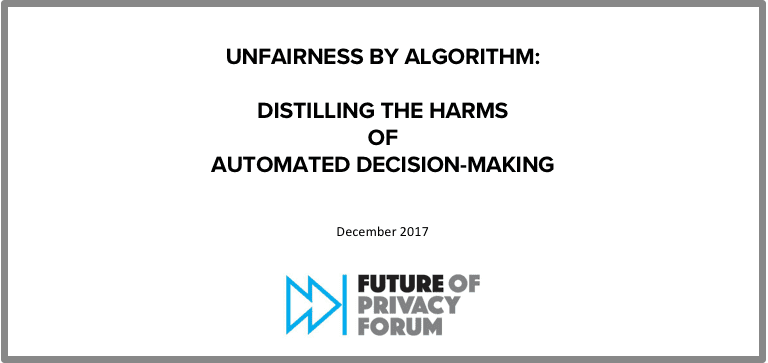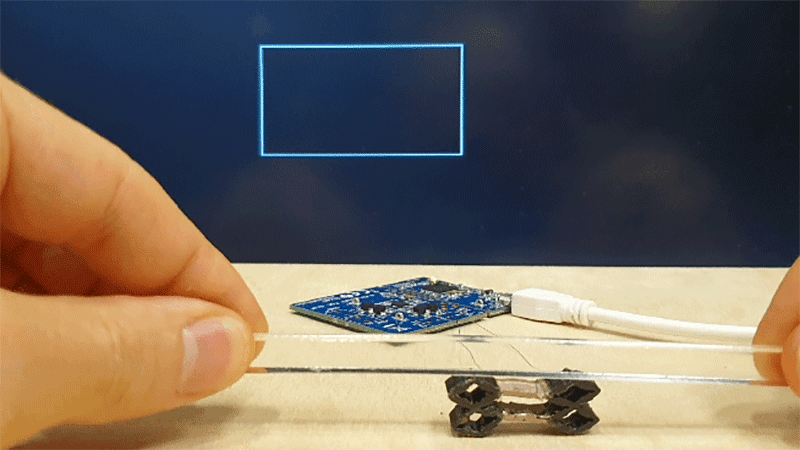
Mapping new cohorts of cells of healthy individuals and COVID-19 patients onto a healthy cells reference atlas (Light blue: Healthy reference patients. Blue: New healthy patients. Black: New moderate COVID-19 patients. Red: New severe COVID-19 patients.)
Researchers developed a novel artificial intelligence algorithm for clinical applications called “scArches”. It efficiently compares patients’ cells with a reference atlas of cells of healthy individuals. This enables physicians to pinpoint cells in disease and prioritize them for personalized treatment in each patient.
he Human Cell Atlas is the world’s largest, growing single-cell reference atlas. It contains references of millions of cells across tissues, organs and developmental stages. These references help physicians to understand the influences of aging, environment and disease on a cell – and ultimately diagnose and treat patients better. Yet, reference atlases do not come without challenges. Single-cell datasets may contain measurement errors (batch effect), the global availability of computational resources is limited and the sharing of raw data is often legally restricted.
Researchers from Helmholtz Zentrum München and the Technical University of Munich (TUM) developed a novel algorithm called “scArches”, short for single-cell architecture surgery. The biggest advantage: “Instead of sharing raw data between clinics or research centers, the algorithm uses transfer learning to compare new datasets from single-cell genomics with existing references and thus preserves privacy and anonymity. This also makes annotating and interpreting of new data sets very easy and democratizes the usage of single-cell reference atlases dramatically,” says Mohammad Lotfollahi, the leading scientist of the algorithm
Example COVID-19
The researchers applied scArches to study COVID-19 in several lung bronchial samples. They compared the cells of COVID-19 patients to healthy references using single-cell transcriptomics. The algorithm was able to separate diseased cells from the references and thus enabled the user to pinpoint the cells in need for treatment, for both mild and severe COVID-19 cases. Biological variation between patients did not affect the quality of the mapping process.
Fabian Theis: “Our vision is that in the future we will use cell references as easily as we nowadays do for genome references. In other word, if you want to bake a cake, you usually do not want to try coming up with your own recipe – instead you just look one up in a cookbook. With scArches, we formalize and simplify this lookup process.”
Original Article: AI helps to spot single diseased cells
More from: Helmholtz Zentrum Munchen | Technical University of Munich
The Latest Updates from Bing News & Google News
Go deeper with Bing News on:
scArches
- Cat Who Learned How to Give Golden Retriever Scratches Can't Get a Moment of Peaceon April 27, 2024 at 11:00 am
As far as she's aware, the kitty figured out how to give her pets and scratches, but if you ask me, this cat may not be on the same page. Nevertheless, their hilarious early April TikTok video is too ...
- Can Coffee Make Those Stubborn Wood Scratches Disappear? Here's What We Knowon April 27, 2024 at 6:45 am
If you own wood furniture, you know it's not uncommon for it to develop unsightly scratches from regular use. Whether your dining table, coffee table, or other piece of furniture is starting to show ...
- Mel Kiper Jr. scratches head over 49ers' first-round Pearsall pickon April 26, 2024 at 9:34 am
NFL draft is in full swing the day after the opening round that saw the first 32 players heading to their new homes among the professional ranks. The annual event always brings a few twists and turns ...
- Drivers just realising that 35p household item sold in all major supermarkets can rid their car of scratches in momentson April 24, 2024 at 7:36 am
MOTORING experts have revealed how a 35p household item sold in all major supermarkets can rid your car of scratches in moments. The team at LeaseCar UK shared an easy DIY hack that could save you ...
- ‘Not a dry eye’ as 12 ‘extraordinary’ horses retire together for rest, carrots and plenty of scratcheson April 21, 2024 at 11:21 am
The rider of a Household Cavalry horse travelled with him for eight hours on their last journey together – as 12 “extraordinary” service horses made an emotional joint retirement. The Horse Trust’s ...
Go deeper with Google Headlines on:
scArches
[google_news title=”” keyword=”scArches” num_posts=”5″ blurb_length=”0″ show_thumb=”left”]
Go deeper with Bing News on:
Single-cell reference atlases
- New multi-task deep learning framework integrates large-scale single-cell proteomics and transcriptomics dataon April 26, 2024 at 7:35 am
The exponential progress in single-cell multi-omics technologies has led to the accumulation of large and diverse multi-omics datasets. However, the integration of single-cell proteomics and ...
- Scientists Can Now See Inside a Single Cancer Cellon April 25, 2024 at 5:00 pm
A team in the UK has found a new window into cancer, thanks to a novel imaging technique that allows them to take a detailed look at the fatty cargo inside a single tumor cell. The tech could make it ...
- International scientific collaboration produces a comprehensive atlas of human skeletal muscle agingon April 21, 2024 at 5:00 pm
“As the most exhaustive atlas of human aging muscle at the single cell level to date, this study will be a reference for the ... atlas with previous cell atlases from non-human primates and ...
- Unlocking the 'chain of worms'on April 16, 2024 at 5:13 am
An international team of scientists has published a single-cell atlas for Pristina leidyi (Pristina), the water nymph worm, a segmented annelid with extraordinary regenerative abilities that has ...
- BICCN: The first complete cell census and atlas of a mammalian brainon April 15, 2024 at 4:47 pm
Generating a complete multimodal cell census and atlas ... akin to the reference genomes for studying gene function and genomic evolution. These atlases of healthy adult brains also provide ...
Go deeper with Google Headlines on:
Single-cell reference atlases
[google_news title=”” keyword=”single-cell reference atlases” num_posts=”5″ blurb_length=”0″ show_thumb=”left”]










